Kauai Physical Therapy Blog
Home of Action Physical Therapy: Kauai's Premier Physical Therapy and Personal Fitness Clinic
Health & Nutrition
To Blow or Not to Blow, That is the Question
Should you blow your nose? What is the alternative? Gross? Yup, but good info nonetheless.
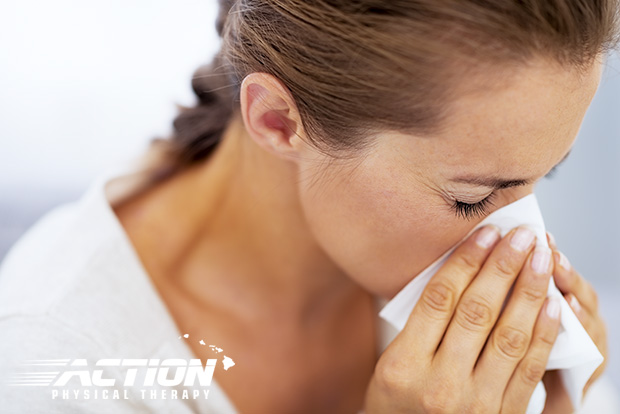
Unless you are a small child, letting snot run down your face isn’t an option. But what if blowing your nose was bad for you or even dangerous? What to do? Uuuuggghhh.
But resent research is pointing to evidence that blowing away your boogers isn’t helpful. When you blow your nose hard, some of your mucus actually flies back into your sinuses, causing problems and exposing you to more bacteria and worsening health.
The thing about stuffy noses is they’re rarely stuffed with snot. If cold, flu, or allergies have you feeling congested, chances are your nose is blocked up not with mucus, but with swollen blood vessels. The case against blowing one’s nose – by which we mean the good, hard, blast that one unleashes when one means serious business – is two fold: First, it generates a lot of pressure in one’s nasal cavity. Second, that pressure can trigger a kind of otolaryngological blowback, blasting dollops of mucus not out the nose, but backwards and into the sinuses.
So are we supposed to, ew, swallow? Well, that is up to you. Best practice however for obvious reasons, is to blow gently.
Chikungunya
Chikungunya virus is transmitted to people by mosquitoes. The most common symptoms of chikungunya virus infection are fever and joint pain. Other symptoms may include headache, muscle pain, joint swelling, or rash. Outbreaks have occurred in countries in Africa, Asia, Europe, and the Indian and Pacific Oceans. In late 2013, chikungunya virus was found for the first time in the Americas on islands in the Caribbean. There is a risk that the virus will be imported to new areas by infected travelers. There is no vaccine to prevent or medicine to treat chikungunya virus infection. Travelers can protect themselves by preventing mosquito bites. When traveling to countries with chikungunya virus, use insect repellent, wear long sleeves and pants, and stay in places with air conditioning or that use window and door screens.
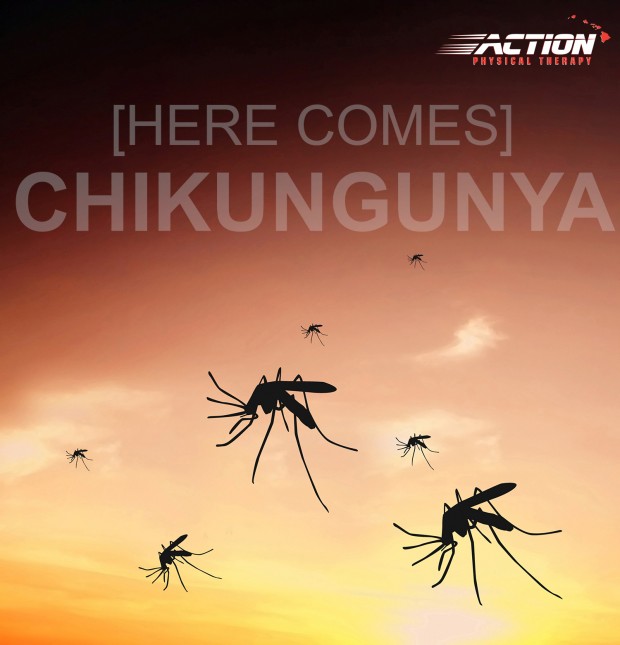
Prevention
- No vaccine exists to prevent chikungunya virus infection or disease.
- Prevent chikungunya virus infection by avoiding mosquito bites (see below).
- The mosquitoes that spread the chikungunya virus bite mostly during the daytime.
Protect Yourself from Mosquito Bites
- Use air conditioning or window/door screens to keep mosquitoes outside. If you are not able to protect yourself from mosquitoes inside your home or hotel, sleep under a mosquito bed net.
- Help reduce the number of mosquitoes outside your home or hotel room by emptying standing water from containers such as flowerpots or buckets.
- When weather permits, wear long-sleeved shirts and long pants.
- Use insect repellents.
- Repellents containing DEET, picaridin, IR3535, and oil of lemon eucalyptus and para-menthane-diol products provide long lasting protection.
- If you use both sunscreen and insect repellent, apply the sunscreen first and then the repellent.
- Do not spray repellent on the skin under your clothing.
- Treat clothing with permethrin or purchase permethrin-treated clothing.
- Always follow the label instructions when using insect repellent or sunscreen.
- More information about insect repellents can be found on the CDC West Nile virus website, “Insect Repellent Use & Safety”.
Stay Healthy by Playing Less? Dr. Andrews thinks so. You should listen.
Dr. James Andrews is the undisputed rock star of orthopedic surgeons. His personal statistics regarding number of surgeries are mind-numbing. The list of who’s who in professional and collegiate sports he has repaired is unparalleled. The contracts his patients have signed post surgery exceeds a billion dollars. To put it succinctly, Dr. Andrews is the authority on sport injuries. Now he wants you to stop playing sports so much. Read on.
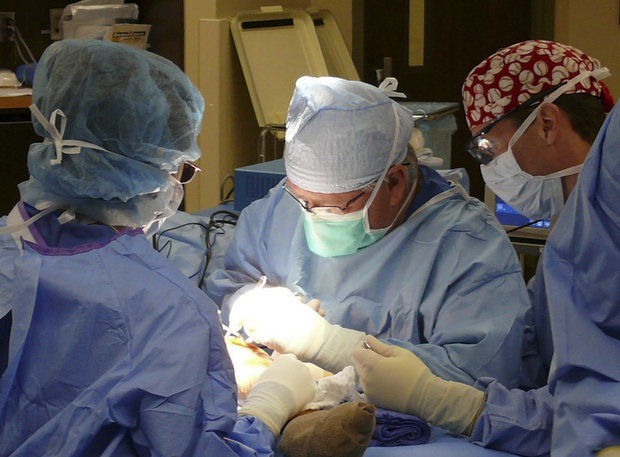
The crux of Dr. Andrews new book, Any Given Monday: Sports Injuries and How to Prevent Them, for Athletes, Parents and Coaches — Based on My Life in Sports Medicine, and personal goal is to stop treating child athletes like they are adults. “I hate to see the kids that we used to not see get hurt. … Now they’re coming in with adult, mature-type sports injuries. It’s a real mess. Maybe this book will help make a dent,” states Dr. Andrews.
His advice is simple. First, kids need a rest between seasons. He advises against specialization where a child plays a sport year round exposing them to more traumatic and repetitive injuries. And second, a child shouldn’t be worked out as if they are a adult. Training for children should be geared towards the child’s age.
For more in depth information on Dr. Andrews and sports medicine click here:
Or watch the video here:
How Sugar Affects the Brain
Have you ever wondered why sugar gives you that warm fuzzy feeling? Do you crave sweet treats? Nicole Avena explains how sugar affects the brain and why it should be enjoyed in moderation in this TED-Ed Original lesson.

Eating sugar activates a rewards system and releases dopamine in your body giving you a warm fuzzy feeling. In this video Nicole explains how our brains have evolved to notice new and special tastes to determine if food has gone bad and to create a desire to eat a variety of foods with an array of nutrition. Sugar however sparks a rewarding feeling every time you eat it making it very addictive and over activates your rewards system making it bad if you too much.
Get a Massage. It’s Good For You!
There are lots of benefits of massage therapy. It can help pain management for cancer, insomnia, anxiety, multiple sclerosis, post-operative recovery and will help heal the heart.

Many Americans suffer from high blood pressure and massage therapy can help you maintain optimal vascular health.
Long-term studies have shown that a consistent massage program can decrease diastolic and systolic blood pressure; decrease salivary and urinary cortisol stress-hormone levels; and lower sources for depression, anxiety and hostility.
If you or someone you know is looking for natural ways to help lower blood pressure, please contact our office today to set up an appointment with Cece our Certified Massage & Zen Muscular Therapist. (808) 246-0144
Click here to read Why Massages Really Do Keep You Healthy: A Cardiologist Explains
Paleo Diet & White Rice
So you thought white rice was bad for you. Plus you are on the Paleo diet, so you’ve been avoiding this Hawaiian pantry staple. Well think again. According to the Paleo Leap’s new article All About Rice it may not be as bad as you think.

This interesting and informative article breaks down the basics of carbs and Paleo diet and examines the differences between brown and white rice. It isn’t saying whether adding white rice to your diet is what you should do, but rather lays down the facts to see if it is right for you.
Click here to read All About Rice on Paleo Leap’s website and to learn more about the Paleo Diet.
Is Your Produce Clean or Pesticide-Laden?
Every fruit and vegetable you buy comes with a dose of poisonous chemicals, unless you are eating organic. But not all produce suffers from the same level of toxicity.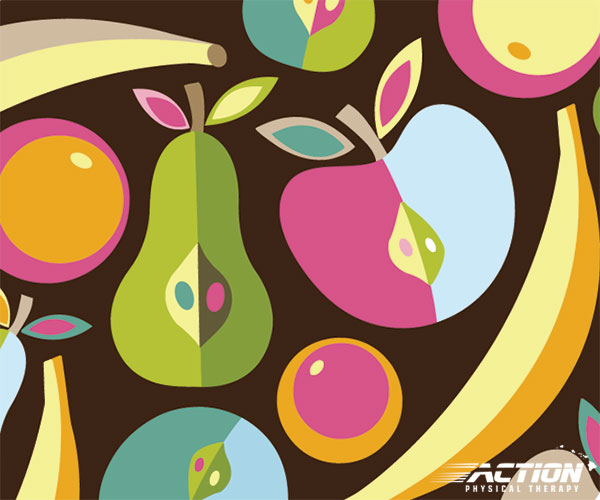
Thankfully the Environmental Working Group just released its annual list of the 15 cleanest and the 12 most pesticide-laden fruit and vegetables to help you decide what to put in your body.
The Dirty Dozen
The Environmental Working Group found these 12 pieces of produce to be most toxic:
1. Apples
2. Strawberries
3. Grapes
4. Celery
5. Peaches
6. Spinach
7. Sweet Bell Peppers
8. Nectarins – Imported
9. Cucumbers
10. Cherry Tomatoes
11. Snap Peas – Imported
12. Potatoes
The Clean Fifteen
The EWG found that the produce listed below are the least likely to hold pesticides residues, and have tested low for total pesticide concentration:
1. Avocados
2. Sweet corn
3. Pineapples
4. Cabbage
5. Frozen sweet peas
6. Onions
7. Asparagus
8. Mangoes
9. Papayas
10. Kiwis
11. Eggplant
12. Grapefruit
13. Cantaloupe
14. Cauliflower
15. Sweet potatoes
Click Here to Read the Full Article on Natural Society’s Web Site.
Coffee, Is It Good or Bad?
Check out this great article by Robert T. Gonzalez about the 10 Reasons Coffee is Both the Best and the Worst Beverage Ever Invented.

Do you represent the over 50% of Americans that drink coffee on a daily basis? We’ll let you decide if this compelling list of pros and cons will change your coffee drinking habit. I know what side I’m picking. What about you?
10) Pro: Coffee + pain medication = extra pain relief
9) Con: Just kidding — because coffee is also linked to headaches. Sort of. Probably.
8) Con: Those who French-press need to watch their cholesterol
7) Pro: Cancer isn’t fond of coffee
6) Con: Ulcers
5) Con: Coffee — not so good for the babies
4) Pro: Coffee likely has a preventive effect against type 2 diabetes
3) Pro: Same goes for cognitive disorders
2) Toss-up : It makes you have to poop
1) Toss up: Drink coffee, see ghosts?
Click here to read 10 Reasons Coffee is Both the Best and the Worst Beverage Ever Invented.
Are You A Couch Potato?
Most Americans would agree that they need to exercise more, but do they realize how little they are moving?
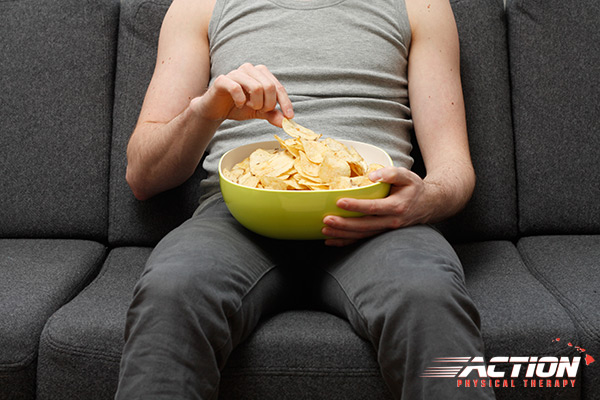
According to an article on EXOS’s website entitled America: A Nation of Couch Potatoes they talk about a new study, published in Mayo Clinic Proceedings, how researchers found that the average person is getting less than two minutes of activity per day. Two minutes a day! Come on America, wake up and get moving.
To read the full article click this link on EXOS website. http://www.coreperformance.com/daily/live-better/america-a-nation-of-couch-potatoes.html
Overtraining can kill you part 2
How are you adapting to the physical stresses you’re putting on your body? Here’s part 2 on breakingmuscle.com
Part 2 of 2 ( Here’s part 1 in case you missed it.)
 Today we talk about stage three – the stage that can literally kill you and can take years to recover from. Consider this a cautionary tale.
Today we talk about stage three – the stage that can literally kill you and can take years to recover from. Consider this a cautionary tale.
http://breakingmuscle.com/training/overtraining-can-kill-you-3-stages-overtraining-part-2


